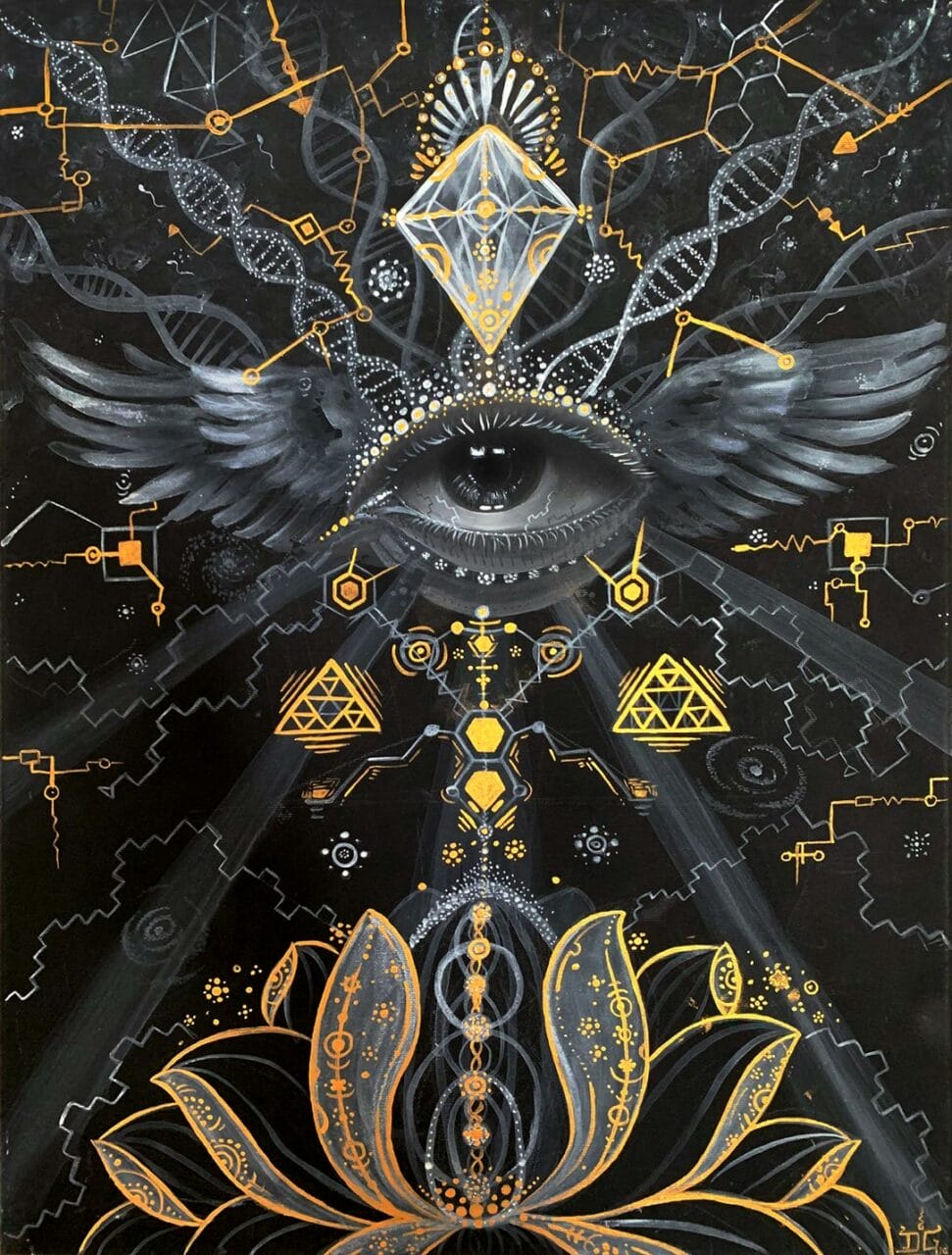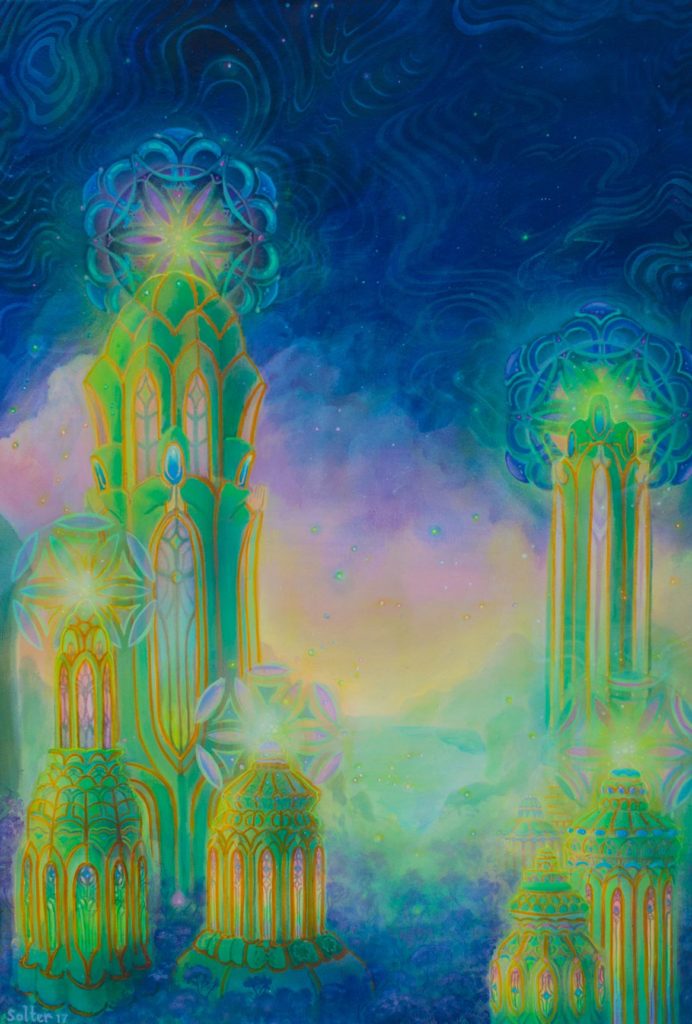
© Uni Kaya
The Historic Record of Psilocybin Mushrooms
Psilocybin Mushrooms, which boasts over 200 unique species, has been in existence since 9000 BC, according to historical documents. These special mushrooms contain psilocybin, a substance known to produce hallucinogenic effects, such as altered perception, visual and auditory hallucinations, and profound spiritual experiences. These mushrooms have served as a key component in spiritual ceremonies, rituals, and practices across diverse cultures and tribes for millennia. A considerable number of these historical uses originate from North and South America.
Psilocybin Mushrooms in Ancient Times
Over the centuries, various cultures have utilized natural psychedelics. Evidence found in the Sahara Desert suggests that humans were consuming Psilocybe Cubensis over 7000 years ago. Archaeological findings reveal the depiction of this psychoactive substance in ancient art across different regions. For instance, around 9000 BC, the indigenous tribes of North Africa in the Sahara documented its use in their paintings. Similarly, the renowned Selva Pascuala mural rock painting in Spain, which dates back almost 6000 years, suggests the use of Psilocybe Hispanica in religious rituals. The influence of these substances on our cultural evolution, religion, art, societal norms, and daily life is increasingly apparent. This material has indisputably left a deep mark on our culture and society.
A Brief History of Psilocybin Mushrooms Use
Historically,magic Psilocybin Mushrooms has been consumed over a long period. The psychoactive substance we are acquainted with today has a rich history spanning multiple centuries, accompanied by a wide range of usage practices. As Magic Mushrooms Edmonton Canada, we are keen to trace the historical journey that has led Psilocybin Mushrooms to its current status.
Main Events
- Dried Psilocybin Mushrooms has been a staple in traditional rituals and spiritual healing for a long time. Today, it is used as a treatment for mental health disorders.
- Psilocybin Mushrooms became a defining feature of the hippie culture and played a significant role in the psychedelic revolution, encouraging its recreational use.
- Key figures such as Wasson, Sabina, and McKenna introduced psilocybin to the contemporary world.

© Jonathan Solter
Endorsing the Stoned Ape Theory
Introduced by Terence McKenna, the Stoned Ape Hypothesis suggests psilocybin might have significantly influenced human evolution, especially cognitive development. Despite some skepticism, the persuasive quality of the theory remains undeniable.
Ancient Civilizations and Holy Rites
Historically, societies symbolized cubes in their art, symbols, and statues, indicating the ceremonial use of Psilocybin Mushrooms. It was used by the Mayans and Aztecs for interacting with supernatural beings, including gods. In the diverse Aztec culture, it was referred to as “teonanácatl“, which means “flesh of the gods”. They did not have a concept for a psychedelic experience, so they interpreted it as a divine entity. In Siberia, shamans used hallucinogenic Psilocybin Mushrooms. They specifically utilized a hallucinogenic substance (Psilocybin Mushrooms) known as “Amanita Muscaria” for spiritual healing and customary traditions, despite its poisonous nature. This practice dates back nearly ten thousand years. In African tribal rituals, especially among the Congo and Zimbabwean tribes, cubes were employed for communicating with ancestors, inciting visions, and promoting spiritual healing. These ancient societies shape the current understanding and use of psilocybin. The reverence for this substance in these cultures originated from its divine attributions and its ability to provoke mystical experiences.
Psilocybin Mushrooms in Legends and Folklore
Various stories, including those by Gordon Wasson, have highlighted the connection between Psilocybin Mushrooms and the mystical world, underscoring its role in folklore and mythology as a medium for divine interaction and enlightenment. In ancient India, the Soma—a ceremonial drink mentioned in the Vedas—was thought to generate altered states of consciousness. Scholars, like Wasson, speculate that it may have been brewed from psychoactive plants, specifically fly agaric. Some even suggest that this ancient beverage might have consisted of a mix of different plants. Regardless of its origins, historical evidence suggests that Soma facilitated the emergence of sacred symbols during rituals, symbolizing a portal to higher wisdom or spiritual enlightenment.
The Contemporary Period
A Brief Look at the
Genesis
Historical documents from before the arrival of Columbus indicate that both the Mayans and Aztecs utilized psilocybin Psilocybin Mushrooms. However, the Spanish authorities in the 15th and 16th centuries deemed its use as uncivilized and consequently outlawed it. Despite this ban, shamans secretly maintained the use of magic Psilocybin Mushrooms, thereby preserving their cultural heritage for over 400 years.
Re-emergence in Western Society
The 1950s saw the re-emergence of these substances in the Western world, due to the groundbreaking work of individuals like R. Gordon Wasson, Roger Heim, and Albert Hofmann. During a journey to Mexico, they managed to extract the two psychedelic components (psilocybin and psilocin) found in the Psilocybin Mushrooms obtained from the Mazatec tribe. Wasson later shared his findings, uses, and perceptions about magic Psilocybin Mushrooms in Life magazine. His articles and personal narratives led to the substance being recognized as a potent hallucinogen. By the 1960s, the substance had become emblematic of the Hippie movement and was seen as a pathway to spiritual exploration. However, its use also stirred considerable debate and fueled a revolution in the recreational use of hallucinogenic substances.
Further Progression: Worldwide Prohibition
In 1971, the United Nations Convention on Psychotropic Substances classified psilocybin as a Schedule 1 illegal drug, together with Lysergic Acid Diethylamide and N, N-Dimethyltryptamine. At that time, they were all considered to have no medicinal value and a high potential for misuse. This led to broad criminalization in Western nations, including Canada and the U.S., severely limiting the spiritual and therapeutic uses of the substance.
The Modern Resurgence of Psilocybin
Recently, there has been an easing of the strict laws surrounding the use of psilocybin, beginning with its decriminalization. This shift is in line with the UN’s permission for treaty member states to regulate the substance according to their own judgement. Simultaneously, a growing body of research and clinical trials on psychedelics and consciousness strongly endorses possible medicinal uses of psilocybin. A 2021 study investigating the therapeutic use of psychedelics suggests that the 1970 ban significantly hindered further research. However, an initial study in 2004 rekindled interest in psilocybin, suggesting potential uses in neuropsychiatry, especially for treating mental health conditions such as:
- Depression, Anxiety, and Stress
- Post-traumatic Stress Disorder (PTSD)
- Obsessive-compulsive Disorder (OCD)
- Drug Abuse (Aiding in Addiction Recovery)
- Excessive Alcohol Consumption and Drugs)
Media and Art’s Influence on Psychedelic Cubes
The conversation surrounding psychedelic cubes has grown popular and is now represented in numerous formats. This revival of interest within the community is driven by various mediums of art, literature, and media. Films such as “Fantastic Fungi” directed by Louie Schwartzberg and documentaries that delve into their therapeutic benefits, have intensified the public’s understanding of their mental and physical effects. Michael Pollan, the author of “How to Change Your Mind,” has investigated the use of psychedelics for mental health and spiritual evolution, rekindling their societal and therapeutic relevance.
Prominent Historical Advocates of Fungi
- María Sabina: María Sabina, a Mazatec shaman and poet from Mexico, contributed to the introduction of cubes to the Western world. She allowed Wasson to observe her Psilocybin Mushrooms rituals.
- Gordon Wasson: Wasson, a prolific writer, garnered international attention towards the drug. His in-depth account of his experiences with Sabina contributed to a broader comprehension of its local consumption.
- Terence McKenna: McKenna, a significant advocate for psychedelics, stressed their cultural and philosophical implications. His speeches, writings, and research popularized the “Stoned Ape” theory, portraying it as a cognitive enhancement tool that impacted society.
A Brief Overview of the Timeline
with TRD.
| Prehistoric | Stone art discovered in the Sahara, Africa, indicates its prehistoric use. | |
| Ancient | The Maya and Aztec civilizations incorporated teonanácatl into their religious and spiritual rituals. | |
| 16th Century | Its association with Indigenous beliefs led to a discouragement of its use. | |
| 18th Century | In 1799, the “intoxicating” effects of the drug came to light after four children accidentally ingested Psilocybe Semilanceata, highlighting the potential negative effects of its use. | |
| 20th Century | Wasson and Sabina introduced the drug to the Western world, sparking the psychedelic revolution among the hippies. The UN sanctioned the possession and consumption of the substance. | |
| 21st Century | Current clinical studies strive to authenticate its medical potential. | Health Canada has sanctioned the use of a Special Access Program for its application as its popularity is on the rise. |
Embrace the Psychedelic Era and Beyond: Purchase Psilocybin Mushrooms Online from Magic Mushrooms Edmonton Canada
The consistent use of cubes at Magic Mushrooms Edmonton Canada, supported by robust scientific research, is set to expand until it achieves worldwide acclaim. Magic Mushrooms Edmonton Canada’s online Psilocybin Mushrooms store is primed to facilitate this evolution. Our extensive array of products attracts customers, encouraging them to embark on the intriguing and therapeutic journey of psilocybin. Secure your favored items from Zoomies today.
Commonly Asked Queries
No, Amanita Muscaria does not contain the active ingredients present in Psilocybe Cubensis. Rather, the psychoactive elements in fly agaric are muscimol and ibotenic acid. One prevailing hypothesis about Soma’s origin proposes it as a mix of various psychoactive flora. Ayahuasca, similarly, is a mind-altering concoction. Nevertheless, the only link between the two is the view of soma as an analogue of ayahuasca. It came under scrutiny for potential Psilocybin Mushrooms toxicity after being classified as a toxic Psilocybin Mushrooms. Today, it is recognized as the Psilocybe Mexicana.

